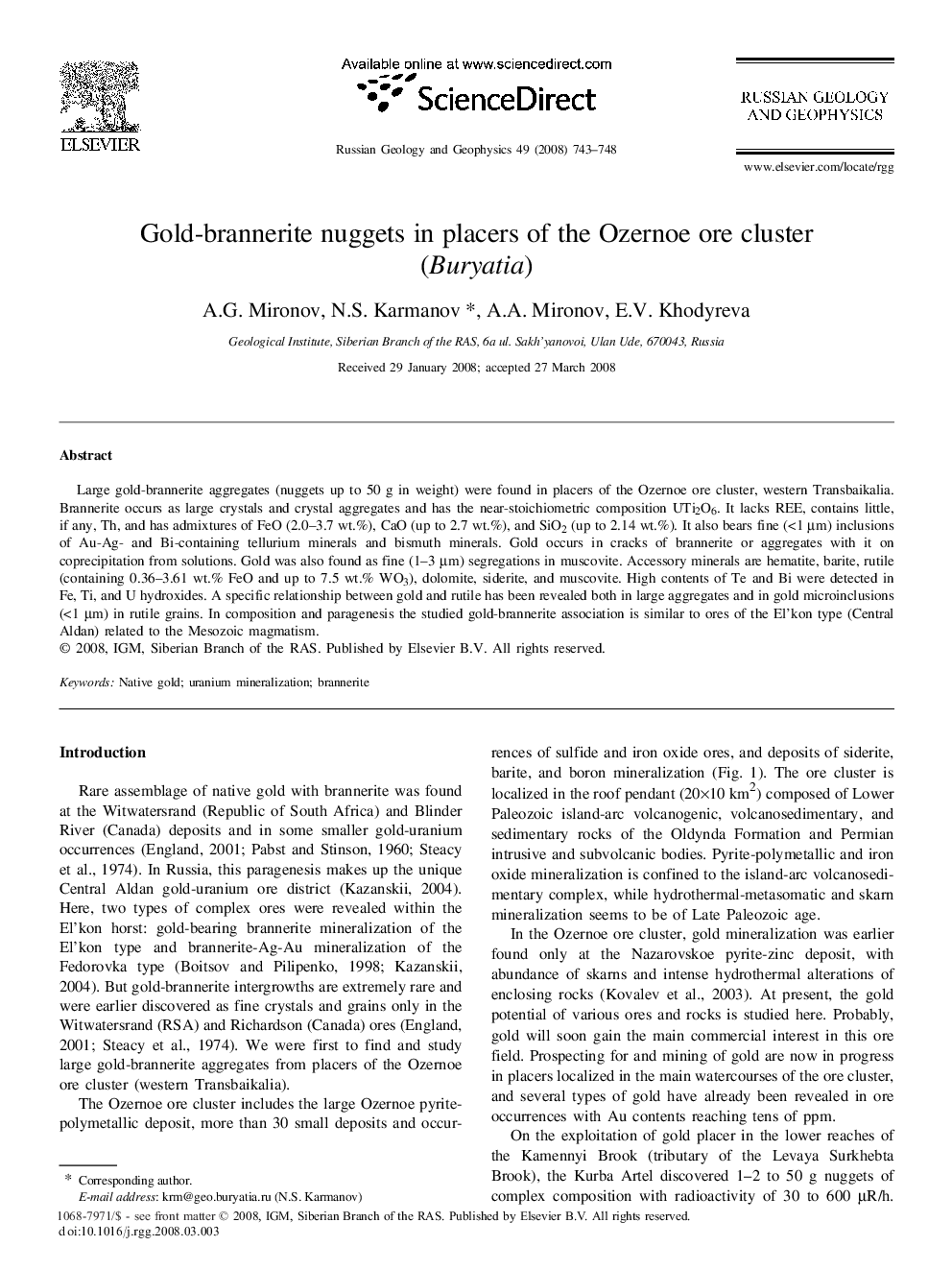| Article ID | Journal | Published Year | Pages | File Type |
|---|---|---|---|---|
| 4739531 | Russian Geology and Geophysics | 2008 | 6 Pages |
Large gold-brannerite aggregates (nuggets up to 50 g in weight) were found in placers of the Ozernoe ore cluster, western Transbaikalia. Brannerite occurs as large crystals and crystal aggregates and has the near-stoichiometric composition UTi2O6. It lacks REE, contains little, if any, Th, and has admixtures of FeO (2.0–3.7 wt.%), CaO (up to 2.7 wt.%), and SiO2 (up to 2.14 wt.%). It also bears fine (<1 μm) inclusions of Au-Ag- and Bi-containing tellurium minerals and bismuth minerals. Gold occurs in cracks of brannerite or aggregates with it on coprecipitation from solutions. Gold was also found as fine (1–3 μm) segregations in muscovite. Accessory minerals are hematite, barite, rutile (containing 0.36–3.61 wt.% FeO and up to 7.5 wt.% WO3), dolomite, siderite, and muscovite. High contents of Te and Bi were detected in Fe, Ti, and U hydroxides. A specific relationship between gold and rutile has been revealed both in large aggregates and in gold microinclusions (<1 μm) in rutile grains. In composition and paragenesis the studied gold-brannerite association is similar to ores of the El’kon type (Central Aldan) related to the Mesozoic magmatism.
